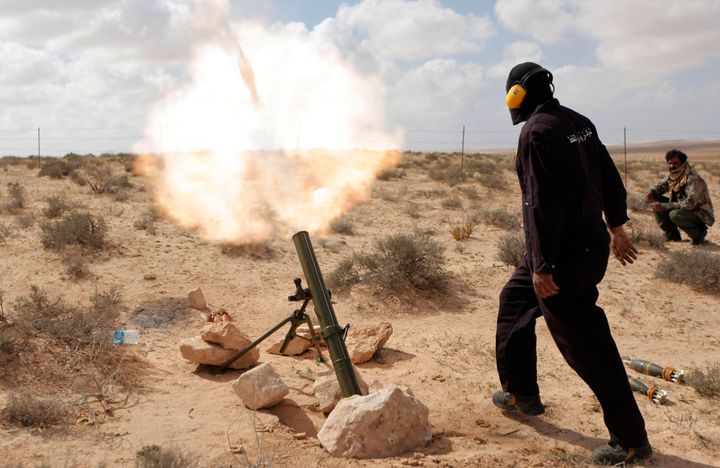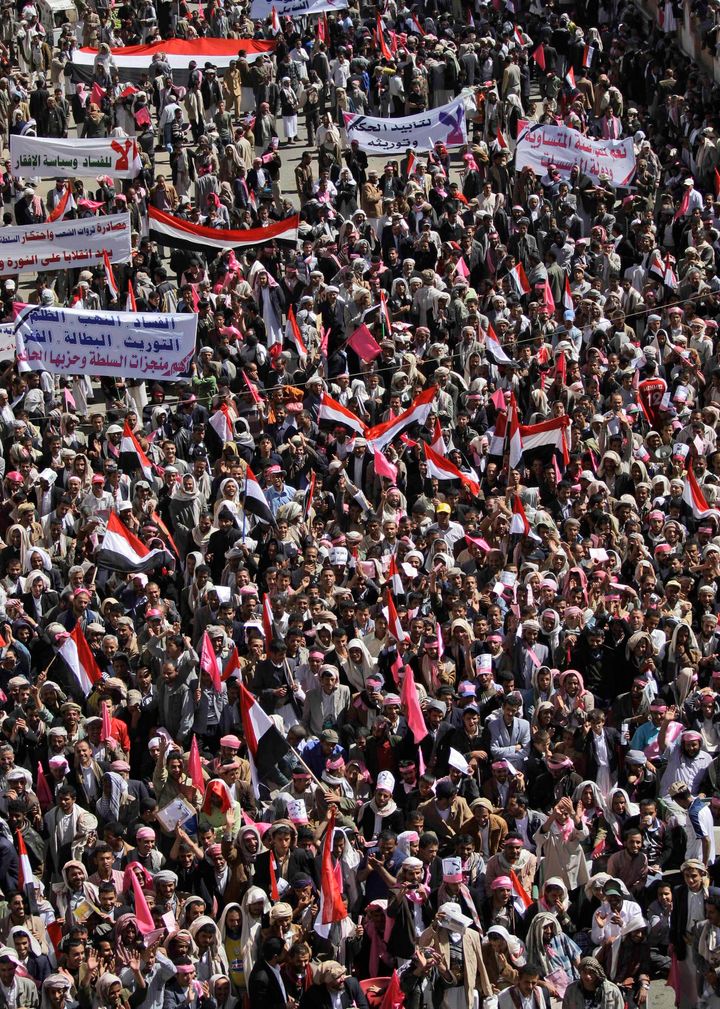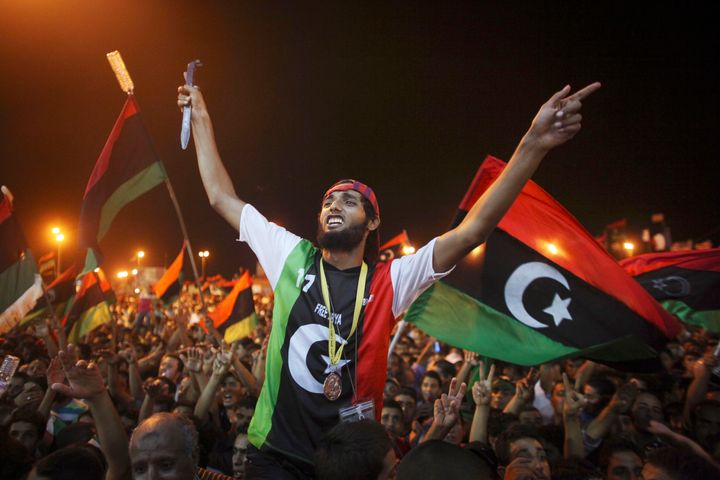One year ago today, Mohamed Bouazizi set himself alight in Tunisia. It was a personal protest that had huge ramifications not only for his homeland, but the entire region. This was the incident which triggered the demonstrations that spread from Tunisia into Egypt, Libya, Syria and beyond. This was the start of the Arab Spring.
At Bouazizi's funeral 5,000 marchers chanted: "Farewell, Mohammed, we will avenge you. We weep for you today, we will make those who caused your death weep."
For all their passion, no one expected what happened next: 12 months of intense protests, violence and revolution across North Africa and the Middle East, which brought down governments and resulted in thousands of deaths.
But 12 months later what has the impact really been? Which governments have fallen, which are on the brink - and which, if any, are stronger than ever? Was the Arab Spring really a movement - or was it always an invention of the press?
And with protests breaking out in Russia, Greece, China and even New York throughout 2011, as well as in the Arab world, has the spirit of the Spring spilled become a truly global phenomenon?
IN PICTURES: A Photographic History Of The Arab Spring
As the Arab Spring marks a year of protest, we look back at what happened, and what changed.

Above: Protesters in Egypt, 29 January 2011 (Image by PA)
THE ARAB SPRING: Turning Points And Political Reform
Tunisia: On 17 December 2010 in Tunisia, Bouazizi set himself alight in front of the offices of the Sidi Bouzid government. His act set off a wave of protests which quickly spread through the country.
Above all the demonstrators called for democratic reform. Under a wave of pressure, Tunisian President Zine al-Abdine Ben Ali was eventually forced to leave office on 14 January.
For all the fervour, elections for a 'Constituent Assembly' were only eventually held on 23 October. The leader of the Ennahda party was appointed Prime Minister.
Egypt: In Egypt warnings of a 'Tunisia-style explosion' were confirmed when thousands of people took to the streets on 25 January, National Police Day. Centred on Tahir Square in Cairo, the protests grew ever larger despite attempts by President Hosni Mobarak's government to shut down the Internet and mobile networks on 27 January, and put down the demonstrations with force.

Above: Egyptian anti-government activists clash with riot police in Cairo, Egypt, Friday, Jan. 28, 2011. (Image by PA)
A bloody crackdown followed, but on 11 February Mubarak was forced to give up power. Since February, Egyptians have grown disillusioned with their revolution and the continuing strength of the military. Protests again begun to fill Tahir Square in December, with violent outbreaks across Cairo. However the first stage of free elections have been held in the country, and slow, if difficult, progress is being made.
Libya: In Bahrain on 14 February a protest movement led by young people began, and was later taken up by the Shi'ite opposition. Meanwhile, in Libya, protests against leader Colonel Muammar Gaddafi also sparked into life.
Within weeks these came to resemble something closer to a civil war. As the opposition hardened in Benghazi, Gaddafi sent government forces to quell the opposition. Nato and the United Nations stepped in, emboldened by the history of conflict with Gaddafi and his lack of regional support from the Arab League, and set up a no-fly zone to protect Benghazi and aid the rebels.

Above: A Libyan rebel shells pro Gaddafi forces with mortar fire, along the front line outside the eastern town of Brega, Libya Thursday, March 31, 2011. (Image by PA)
Months of violent stalemate followed, but in August the capital Tripoli fell to the opposition National Transitional Council, and Gaddafi's rule came to an end. He was eventually captured and killed on 20 October in his hometown of Sirte.
Syria: In Syria a pro-democracy protest movement directed against Syrian president Bashar al-Assad rose up in mid-March.
The protests have continued in large numbers ever since, but after series of escalating government crackdowns the United Nations estimates that at least 5,000 people have been killed.
As the year comes to a close there are signs that the Syrian protests are gradually transforming into something more closely resembling a civil war, like that in Libya. The increasingly bold Free Syrian Army, made up of defected army officers, has attacked and killed government troops, which some have said has strengthened Assad's regime as much as it has hurt his forces.
As of December 2011, with Assad still defying critics in the Arab League and western nations, wilfully ignoring economic sanctions and denying all knowledge of accusations of child torture and mass violence, there is no sign that the situation is moving towards a close.

Above: Yemeni demonstrators chant slogans and wave their national flags during a rally calling for an end to the government of President Ali Abdullah Saleh, in Sanaa, Yemen, Thursday, Jan. 27, 2011. (Image by PA)
Elsewhere: Other countries around the world have seen large-scale and often violent protests and government crackdowns.
In the Sultanate of Oman social protests have been seen on the streets. In Iraq weekly demonstrations against government corruption have been see, while in Iraqi Kurdistan democratic protests were violently suppressed in February, according to Reporters Without Borders.
In Kuwait, Jordan and even in parts of territory governed by the Palestinian Authority and Hamas gatherings have been called aiming at political reform, but progress has been inconclusive.
Other countries have launched pre-emptive reforms in order to prevent rebellions. In Algeria President Abdellaziz Bouteflika announced efforts to reform the political system in April, while King Mohamed of Morocco accepted a series of constitutional reforms.
IN PICTURES: A PHOTOGRAPHIC HISTORY OF THE ARAB SPRING

Above: People celebrate the capture in Tripoli of Moammar Gaddafi's son and one-time heir apparent, Saif al-Islam, at the rebel-held town of Benghazi, Libya, early Monday, Aug. 22, 2011. (Image by PA)
MEDIA: The Role Of The Media, From Facebook To Sky News
The role of social media networks including Twitter and Facebook has been debated endlessly online and in the press ever since the Arab Spring uprisings began.
Some have passionately argued that the new and more open communication afforded by these networks has been a vital organising tool.
Right at the start of the Tunisian uprising in December 2010, for instance, the self-immolation of Sidi Bouzid was not reported by the restrictive national media - but on Facebook the news quickly got out. More than 100 pages on the incident were created - and blocked. Arrests and further shut-downs followed. The libertarian hacking collective Anonymous attached government websites in an operation known as Operation Tunisia in response and once Ben Ali fled the blogger Slim Amamou was appointed secretary of state for youth and sport.
Others have said that at best social media has been an additional weapon for protesters whose concerns are entirely separate to developments in the media.
For journalists, at least, social media tools have proved an important way of speaking to protesters with relative assurance that the security of protesters will not be compromised.
The Huffington Post UK has conducted several interviews with people inside Syria via Skype, for instance. These interviews, usually facilitated by activist networks, have provided important insights to a region that otherwise would be largely inaccessible to foreign media.
Global and local activist networks including Avaaz have also made use of social media in more targeted ways, for instance developing networks of so-called 'citizen journalists' whose work in getting out YouTube videos and accounts of torture and violence have been vital.
Mainstream media networks have also produced some exceptional journalism across the region. We spoke to the team behind a Channel 4 Unreported World documentary recorded secretly inside Syria, for instance, which made an important impact in the UK.

Above: A revolutionary fighter fires at Gaddafi loyalists in downtown Sirte, Libya, Tuesday, Oct. 18, 2011. (Image by PA)
IN PICTURES: A PHOTOGRAPHIC HISTORY OF THE ARAB SPRING
DEATH TOLL: What Was The Cost?
The most immediate and visceral impact of the Arab Spring has been on the thousands of people who have died as a result of violence and government crackdowns.
Reports of the total dead and injured are difficult to discern, particularly because of the reporting restrictions still in place in countries such as Syria.
In total, rough and unconfirmed estimates range from 30,000 to 40,000 dead, with many thousands more injured.
IMPACT: What Does 2012 Hold For The Arab Spring?
The lasting impact of the Arab Spring is still a topic of some discussion.
The usefulness of the term itself still causes debate, and the Western assumption that the protesters' aims would always be a Western-style democracy have also been criticised.
Some have argued that the Arab Spring could turn into a cruel winter as those fuelled by the exuberance of revolution wake up to the harsh economic reality of government.
Others have said that the Arab Spring has shown that the one thing protests do well is inspire other protests:
Writing in the Guardian, Ian Black said: "Activists across the Arab world speak of breaking through the barrier of fear so that even the harshest repression no longer deters. The experience of one revolution has inspired another in sympathy and solidarity"
And when Time magazine announced that its person of the year was "the protester", from the Arab Spring to Occupy Wall Street, it drew clear links between the demonstrations in North Africa and the Middle East to those in struggling Western economies.